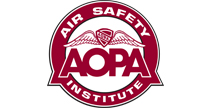Technology trumps common sense ‘in the soup’
CHI07FA176
 GPS has been a revolutionary force in the GA cockpit, especially as datalink weather and other technology has been integrated into multifunction displays. For the prepared and prudent pilot, these systems enhance situational awareness and improve safety. The key is to understand the functionality, be aware of its limitations, and never allow technology to trump common sense.
GPS has been a revolutionary force in the GA cockpit, especially as datalink weather and other technology has been integrated into multifunction displays. For the prepared and prudent pilot, these systems enhance situational awareness and improve safety. The key is to understand the functionality, be aware of its limitations, and never allow technology to trump common sense.
On June 22, 2007, the noninstrument-rated pilot of a Beech A36TC Bonanza spent an hour going over his new weather-equipped GPS system before departing on a cross-country flight—without getting a weather briefing. After encountering deteriorating conditions, he contemplated turning around but hesitated while discussing his onboard weather data with ATC. He became disoriented in instrument meteorological conditions and died following an uncontrolled plunge into terrain near Cannon Falls, Minn.
The pilot had flown the airplane to Dupage Airport in West Chicago, Ill., about six weeks earlier for an avionics upgrade. The newly installed equipment included a Garmin GNS 430W GPS, GMX 200 multifunction display, and GDL 69A datalink receiver with XM WX Satellite Weather. On June 21, the day before the accident, the pilot spent about three hours with a representative of the avionics shop going over the new equipment.
On June 22, the Bonanza pilot practiced with the new avionics for about an hour before departing for Airlake Airport near Minneapolis, about 270 nautical miles to the northwest. The pilot did not obtain a weather briefing prior to his 12:30 p.m. departure. No flight plan was filed.
At 2:10 p.m., level at 2,500 feet msl, the pilot contacted Minneapolis Approach Control. ATC advised him of moderate to heavy rain showers over Airlake Airport. Three minutes later, the VFR-only pilot reported that he was experiencing “poor visibility” and asked what the weather conditions were like ahead of him. He stated that he was considering turning 180 degrees to “go back.”
ATC told the pilot that instrument conditions prevailed north of his position. The controller then asked if he was going to reverse course. The pilot initially said yes, but changed his mind, saying, “We’re gonna actually head, ah, due north.”
At 2:14 p.m., ATC asked the pilot for his current destination. The pilot responded, “We’re deviating. I think we’re going to go back over near Eau Claire, but, ah, we’re going to see what the weather is like. We’re, we’re kinda in the soup at this point so I’m trying to get back, ah, to the east.”
Another minute passed. The pilot called ATC and asked, “What is the, ah, ah, Lakeville weather? I was showing 7,000 and overcast on the system here. Is that still holding?” Approach Control responded that the actual weather at most airports in the Minneapolis area was much lower.
Shortly thereafter, the pilot stated, “I’m going to head due south at this time, down to, ah, about 2,000 and make it into Lakeville.” The Bonanza descended to 2,300 feet msl before disappearing from radar. A witness heard and saw the airplane emerge from a cloud layer about 400 to 500 feet agl. The aircraft was traveling very fast in a 50- to 60-degree nose down attitude. The witness heard it impact terrain behind a tree line at about 2:17 p.m.
Examination of the wreckage revealed that the airspeed indicator was stuck at 202 knots. The engine, which showed no sign of preexisting anomalies, was located about four to five feet below ground. NTSB investigators determined that the accident was caused by the pilot’s continued flight into IMC, which resulted in spatial disorientation and loss of control.
The pilot first reported poor visibility (and contemplated a 180-degree turn) at 2:13 p.m. For the next three minutes, however, he hemmed and hawed while discussing weather conditions with ATC. Despite the obvious “soup” outside his window at 2,500 feet msl, the pilot seemed incredulous that conditions at his destination airport weren’t the expected 7,000-foot overcast. (The 1:55 p.m. METAR for Airlake Airport, which should have been available via the pilot’s datalink connection, actually was reporting a 1,400-foot overcast with visibility two and a half miles in heavy rain.)
Weather-linked GPS systems can be an invaluable safety tool in the cockpit, but the same technology can also be a distraction if the pilot isn’t completely familiar with its use. The avionics representative who trained the accident pilot on his new GPS system later described him as “pretty proficient,” adding that the pilot had the basic functions “down pretty good.”
Unfortunately, if it takes qualifiers like “pretty” to describe whether a pilot is proficient, chances are he’s not. Moreover, no amount of technological proficiency should get in the way of basic survival: For a VFR-only pilot in IMC, priority one should be getting the airplane back into visual conditions. “In the soup” is no time to be pushing buttons or talking about the weather. Remember to aviate first. Navigate and communicate once you’re in the clear.
Related Links
“GPS From the Ground Up” live safety seminar
“GPS From the Ground Up” Safety Advisor
“Datalink” interactive minicourse
“Accident Case Study: VFR Into IMC” interactive minicourse